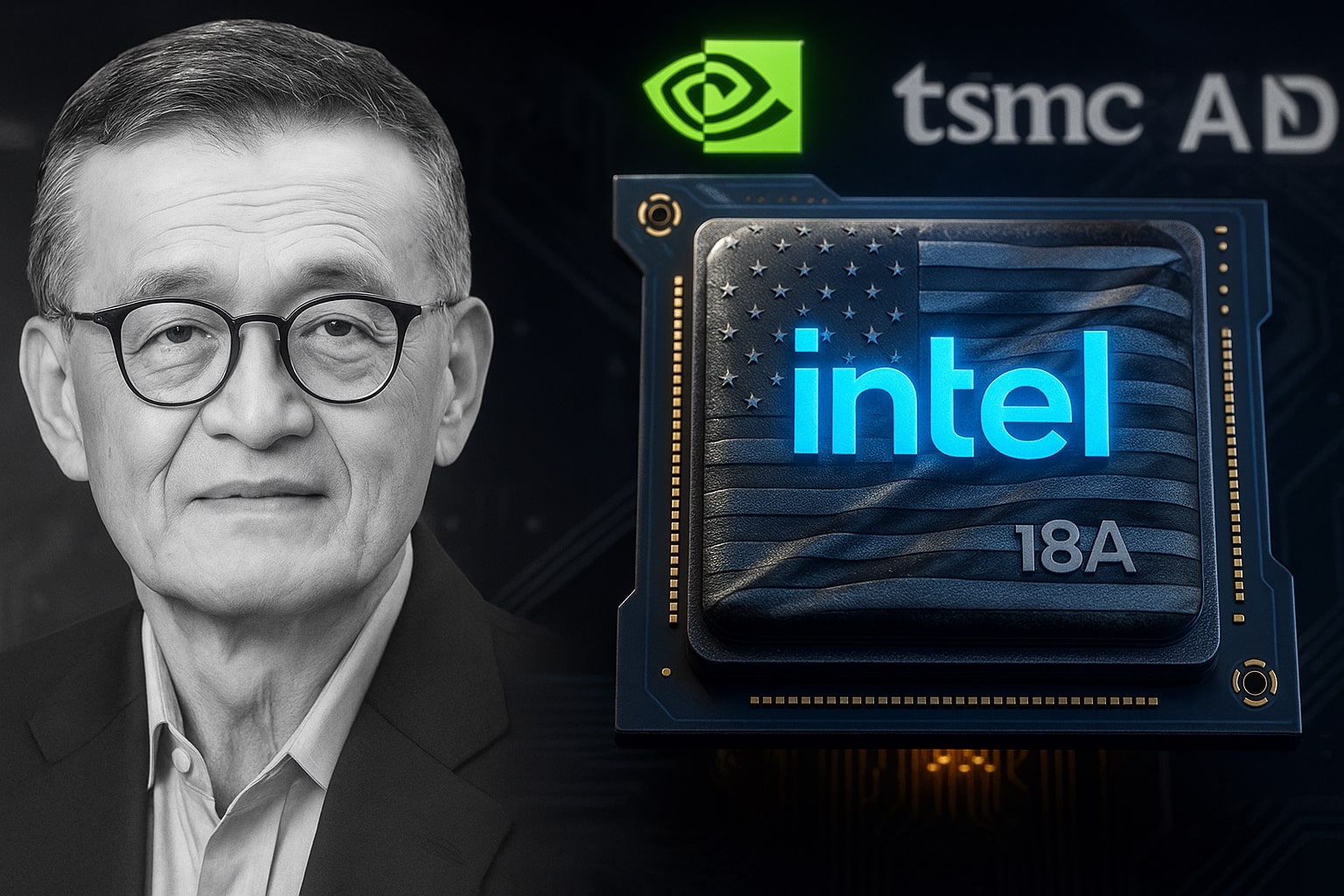
Stock Market Today: Nasdaq Surges Toward 22,650, S&P 500 Hits 6,654 as NVDA Stock ($186.04) Looms
Wall Street rebounds from a four-day slide with tech forming the rally’s backbone. NVDA's highly anticipated earnings, Alphabet at $298.97 and AVGO at $1,760.41 | That's TradingNEWS
Stock Market Today - Wall Street Rallies As Tech Reclaims Control And Indices Break Four-Day Slide
The U.S. stock market opened decisively higher on Wednesday, snapping a four-session losing streak that tested investor sentiment across all major benchmarks. The Nasdaq Composite (^IXIC) surged 1.4% to 22,647.65, reclaiming its leadership position after a two-day decline of over 2.6%, while the S&P 500 (^GSPC) advanced 0.9% to 6,654.88, ending its sharpest drawdown since early spring. The Dow Jones Industrial Average (^DJI) added 0.2% to 46,063.82, with the Russell 2000 (^RUT) outperforming small caps at +1.1%, reflecting renewed risk appetite.
The rotation back into high-beta technology was immediate. After several days of deleveraging in AI-related equities, traders began rebuilding exposure ahead of Nvidia’s (NASDAQ:NVDA) third-quarter earnings — the most anticipated report of the season. Alphabet (NASDAQ:GOOGL) jumped 5.17% to $298.97, Broadcom (NASDAQ:AVGO) climbed over 5%, and Tesla (NASDAQ:TSLA) added 0.99% to $405.21. Meanwhile, Nvidia rose 2.58% to $186.04, driving a broader recovery in semiconductor names.
Futures markets reflected improving sentiment after days of institutional caution. E-Mini Nasdaq-100 (NQ00) futures advanced 1.26%, E-Mini S&P 500 (ES00) rose 0.76%, and E-Mini Dow (YM00) edged 0.08% higher. Bond yields stabilized as the U.S. 10-Year Treasury (TMUBMUSD10Y) hovered around 4.12%, while the Cboe Volatility Index (VIX) dropped 8.3% to 22.64, calming after briefly breaking 25 earlier in the week — a level historically associated with lower forward returns.
The broader context remains fragile. Despite the rebound, the S&P 500 is still down roughly 3% month-to-date, the Nasdaq Composite has fallen over 6% since late October, and traders are bracing for potentially violent post-earnings swings. This setup left the market almost entirely dependent on Nvidia’s numbers and the Federal Reserve’s minutes, which together could determine the short-term direction of both valuations and sentiment.
Nvidia Dominates Market Attention As AI Optimism Faces Its Most Critical Test
All eyes turned to Nvidia (NVDA), whose report is expected to dictate the next leg of the market’s AI trade. The company remains the cornerstone of the semiconductor and data-center ecosystem, controlling nearly 90% of the GPU market for AI training systems. Even after a 12% decline from its October record high of $5 trillion in market capitalization, Nvidia still holds a staggering $4.5 trillion valuation — larger than the combined market caps of Intel, AMD, Broadcom, and Qualcomm.
Analysts anticipate revenue of $54.9 billion, representing 56% year-over-year growth, with data-center revenue at $49 billion (+59% YoY) and net income of $30.7 billion, or $1.26 per share. Operating income is forecast to surge 56% to $36.2 billion, while forward guidance could reach $62.2 billion in revenue for the next quarter, a 58% YoY increase. These are numbers no other hardware company in history has produced at such scale.
Yet, valuation anxiety continues to shadow enthusiasm. Nvidia trades at 28.5× forward earnings, nearly identical to the Nasdaq’s 27.7× multiple, but below its historical premium of over 40% relative to the index. The stock’s volatility is equally extraordinary: options markets anticipate an 8% post-report move, translating to roughly $320 billion in potential market-cap swing.
If results meet expectations, the S&P 500 could climb toward 6,750 and the Nasdaq Composite could advance past 23,200, extending AI-driven leadership into year-end. However, a weak revenue guide or evidence of decelerating data-center demand could erase the week’s entire recovery, as passive funds and quantitative models unwind exposure to megacaps.
Retail Sector Split Widens Between Home Depot, Lowe’s, And Target
The retail landscape showed sharp divergence. Lowe’s Companies (NYSE:LOW) delivered a strong quarter, reporting EPS of $3.06, beating estimates of $2.97, on $21 billion in sales. The company raised its full-year revenue outlook from $84.5 billion to $86 billion, while narrowing guidance to $12.20–$12.45 per share. Shares surged 4.91% to $230.37, supported by expanding online sales and a surge in demand from professional contractors.
In contrast, Home Depot (NYSE:HD) continued to struggle, posting EPS of $3.74, missing consensus by $0.10, even as revenue rose slightly to $41.35 billion, ahead of expectations. Shares slipped another 0.7%, extending a five-day losing streak, as the retailer warned of continued weakness in big-ticket items.
Target (NYSE:TGT) fell 0.65% to $87.96 after slashing its annual profit guidance. Comparable-store sales declined 3.8%, offset only partially by 2.4% online growth. Management cited “choiceful spending” among consumers focused on food and essentials, with discretionary demand sharply reduced ahead of the holiday season. Target cut prices on over 3,000 household items and plans a 25% increase in capital expenditure for 2026 to revamp stores.
The earnings divide signals a more polarized consumer economy — high-income households sustaining renovation and luxury spending, while middle-income consumers retreat under inflation pressure. Analysts view Lowe’s digital and contractor momentum as a bullish sign, while Home Depot and Target remain vulnerable to margin compression.
Read More
-
FUTY ETF Outperforms S&P 500 as Utilities Surge — Analysts See 25% Upside
19.11.2025 · TradingNEWS ArchiveStocks
-
XRP ETFs XRPI and XRPR Drop as XRP-USD Holds $2.00 — $128M ETF Inflows Signal 35% Upside Potential
19.11.2025 · TradingNEWS ArchiveCrypto
-
Natural Gas Price (NG=F) Rallies 5% to $4.55 as Winter Cold and LNG Flows Ignite Bullish Momentum
19.11.2025 · TradingNEWS ArchiveCommodities
-
USD/JPY Price Forecast - Yen Rallies to 156.54 as Rising JGB Yields
19.11.2025 · TradingNEWS ArchiveForex
Energy, AI Infrastructure, And Nuclear Revival: The New Power Trade
Energy stocks found a new narrative through technology partnerships. Constellation Energy (NASDAQ:CEG) surged 5.48% to $357.95 after the U.S. Department of Energy approved a $1 billion loan to restart the Three Mile Island nuclear reactor in Pennsylvania. The company committed $1.6 billion in capital toward relaunching the 835-megawatt unit, capable of powering 800,000 homes. Under a 20-year agreement, the energy output will feed Microsoft’s (NASDAQ:MSFT) regional data centers — illustrating the growing nexus between clean energy and AI compute demand.
Meanwhile, crude oil (CL=F) dropped 2.29% to $59.35 a barrel, extending its slide amid weaker global demand, while gold (GC=F) rose 1.14% to $4,112.70 per ounce as investors repositioned into safe-haven assets. The S&P GSCI Spot Index slipped 1.00%, while the KBW Bank Index climbed 0.67% to 147.15, showing modest financial resilience.
Fed Minutes And Market Technicals Signal Controlled Volatility
The release of the Federal Reserve’s latest meeting minutes loomed large as traders sought clarity on the central bank’s next policy step. The 10-Year Treasury yield remained anchored at 4.123%, suggesting the bond market expects a prolonged pause before any rate cuts. Fed Funds futures implied just 48% odds of a December cut, a steep drop from 68% at the start of the month.
Goldman Sachs (NYSE:GS) President John Waldron warned that the market “could pull back further from here,” citing overstretched valuations and concentration risk. The equal-weighted S&P 500 is down nearly 2% since late October, compared with the 4% decline in the cap-weighted version — evidence that breadth continues to thin as the “Magnificent Three” (Nvidia, Microsoft, Alphabet) dominate performance.
Corporate And M&A Activity Reinforce Strategic Shifts In AI Ecosystem
In M&A, Adobe (NASDAQ:ADBE) announced the $1.9 billion acquisition of Semrush Holdings (NASDAQ:SEMR) at $12 per share, representing a 75% premium to the prior close of $6.76. Shares of Semrush soared 74.56% to $11.80, while Adobe rose 0.18%. The acquisition strengthens Adobe’s AI-driven marketing platform, aligning with a trend of legacy tech firms absorbing specialized AI data-analytics players to remain competitive.
Blue Owl Capital (NYSE:OBDC) advanced 2.81% after canceling a merger with its non-traded affiliate OBDC II, protecting investors from potential dilution. Blue Owl remains a financing partner for Meta Platforms (NASDAQ:META) through a $27 billion joint venture tied to AI data center construction in Louisiana — a transaction that allows Meta to raise capital without balance-sheet impact. This structure, now under close investor scrutiny, reveals a new form of off-balance-sheet financing fueling AI infrastructure expansion across Silicon Valley.
Crypto Weakness Deepens As Gold Outperforms And Liquidity Tightens
Bitcoin (BTC-USD) slipped 2.74% to $90,239, extending a 30% drawdown from its 2025 peak near $130,000. Leverage-driven liquidations surged across exchanges, with October posting record margin calls following trade disruptions linked to renewed U.S.–China tariff tensions. The BlackRock Bitcoin ETF (IBIT) recorded record outflows, reinforcing institutional fatigue toward crypto exposure.
In stark contrast, gold (GC=F) remains up 55% year-to-date, on pace for its best year since 1979. The metal continues to attract reserve accumulation from central banks hedging against sovereign-debt volatility. The U.S. Dollar Index (DXY) rose 0.47% to 100.02, strengthening alongside safe-haven flows, while Bitcoin’s correlation to the Nasdaq climbed to 0.82, confirming its failure to decouple from risk assets.
Institutional Sentiment And Outlook For Year-End 2025
Institutional positioning remains defensive despite the index rebound. Hedge funds cut gross exposure by nearly 6% over the past week, according to prime-brokerage data, while systematic funds increased short-term beta exposure by 18% ahead of Nvidia’s print. Corporate insiders in key tech names have remained net sellers since early October, signaling caution at elevated valuations.
Fed minutes, coupled with Nvidia’s results, will dictate the next directional phase. A strong Nvidia beat could extend the Nasdaq Composite toward 23,300, restore market breadth, and revive AI-linked ETFs such as SOXX, SMH, and QQQI. Conversely, a miss or weaker guidance could trigger another 4–6% correction, pushing the S&P 500 back toward 6,450 support.
Final Market Judgment And Investment Stance
Market strength remains narrow, driven almost entirely by megacap tech. The Nasdaq Composite (^IXIC) near 22,650 and S&P 500 (^GSPC) at 6,654 reflect momentum built on AI expectations, not broad earnings recovery.
Leaders like Nvidia (NVDA $186.04), Alphabet (GOOGL $298.97), Broadcom (AVGO $1,760.41), Lowe’s (LOW $230.37), and Constellation Energy (CEG $357.95) continue to show strength, while Target (TGT $87.96) and Home Depot (HD $337.41) reveal weak consumer trends. Gold (GC=F $4,112.70) rising and crude (CL=F $59.35) falling confirm defensive capital rotation.
Verdict: Tactical Hold With Bullish Tilt.
Upside remains intact if Nvidia’s guidance exceeds $62B, potentially lifting NVDA toward $195–$200 and the Nasdaq above 23,200. A miss could drag NVDA back to $170 and the S&P 500 toward 6,500. Stay selectively long in top AI names and maintain defensive exposure in gold until Q1 2026 clarity.


















